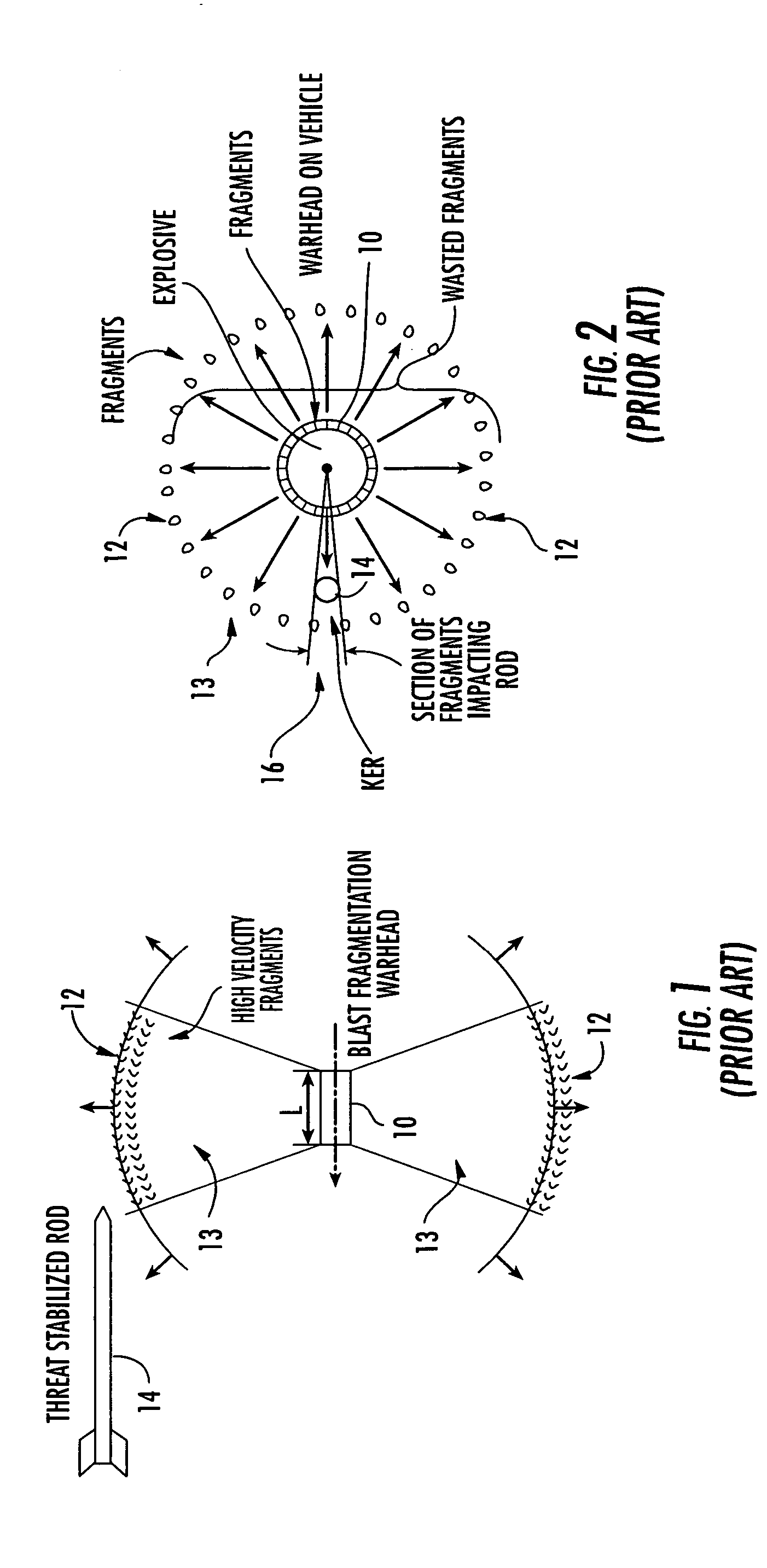Vehicle-borne system and method for countering an incoming threat
a vehicle-borne system and incoming threat technology, applied in the field of vehicle-borne system and method for countering an incoming threat, can solve the problems of heavy casualties, blast fragmentation type warheads, and inability to navigate, and achieve the effects of effectively displace or deflecting the flight path, effectively breaking or breaking an incoming ker or heat round, and effective disassembly and maintenan
- Summary
- Abstract
- Description
- Claims
- Application Information
AI Technical Summary
Benefits of technology
Problems solved by technology
Method used
Image
Examples
Embodiment Construction
[0035] Aside from the preferred embodiment or embodiments disclosed below, this invention is capable of other embodiments and of being practiced or being carried out in various ways. Thus, it is to be understood that the invention is not limited in its application to the details of construction and the arrangements of components set forth in the following description or illustrated in the drawings.
[0036] As discussed in the Background section, conventional warhead designs and methods cannot achieve a hard kill by breaking an incoming threat, such as a KER or heat round (shaped charge) into many pieces. Conventional warheads can only achieve soft or deflection kills of the KER or heat round which does not ensure high probability of survival of a home vehicle, e.g., a tank or armored personnel carrier. As shown in FIG. 1, conventional warhead 10 deploys fragments 12 such that the majority (e.g., 97%) of fragments 12 miss intended incoming threat or target 14 (e.g., a KER or a heat ro...
PUM
 Login to View More
Login to View More Abstract
Description
Claims
Application Information
 Login to View More
Login to View More - R&D
- Intellectual Property
- Life Sciences
- Materials
- Tech Scout
- Unparalleled Data Quality
- Higher Quality Content
- 60% Fewer Hallucinations
Browse by: Latest US Patents, China's latest patents, Technical Efficacy Thesaurus, Application Domain, Technology Topic, Popular Technical Reports.
© 2025 PatSnap. All rights reserved.Legal|Privacy policy|Modern Slavery Act Transparency Statement|Sitemap|About US| Contact US: help@patsnap.com



